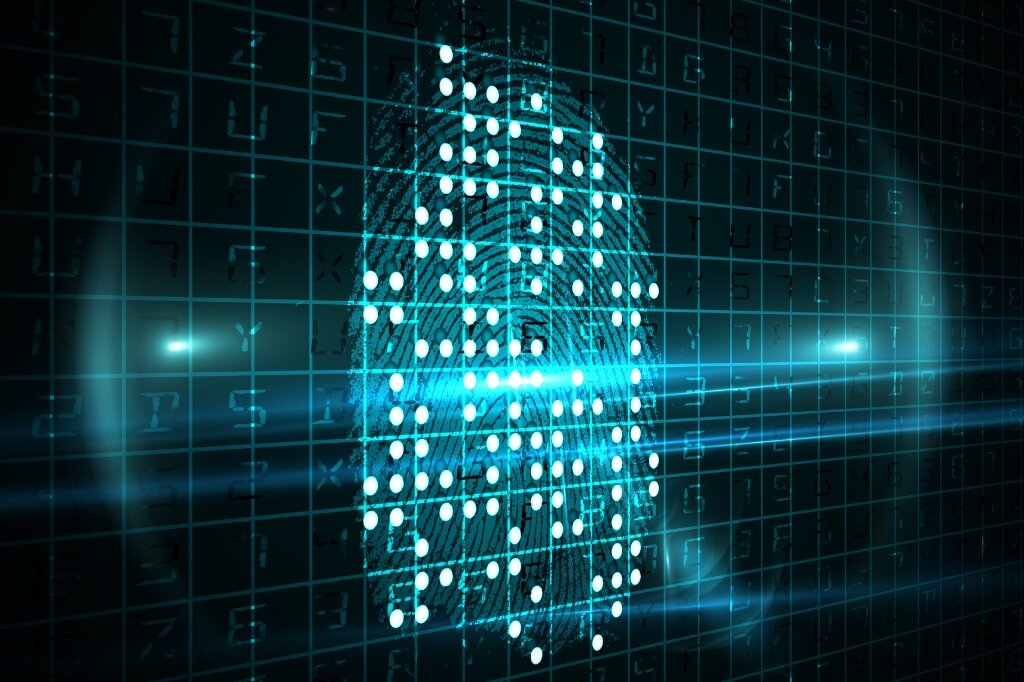Digital Fingerprinting - Understanding its Purpose and Process

Strong 8k brings an ultra-HD IPTV experience to your living room and your pocket.
In the realm of digital security and identification, the concept of fingerprinting has evolved beyond its traditional forensic origins to encompass the digital landscape. Digital fingerprinting, also known as electronic fingerprinting or biometric fingerprinting, plays a pivotal role in various sectors, from law enforcement and cybersecurity to identity verification and copyright protection. In this article, we'll explore what digital fingerprinting entails, why it's required, the benefits it offers over traditional methods, and the process involved.
What is Digital Fingerprinting?
Digital fingerprinting is a method of uniquely identifying digital files, documents, or individuals based on specific characteristics or patterns within their electronic data. Just as each person has a unique physical fingerprint, digital fingerprinting assigns a distinct identifier to digital assets, enabling efficient tracking, verification, and protection.
Why is Digital Fingerprinting Required?
Identity Verification: Digital fingerprinting is essential for verifying the identity of individuals in various contexts, such as background checks, employment screening, and access control. By capturing and storing digital fingerprints, organizations can ensure the authenticity of individuals accessing their services or facilities.
Security Measures: In the realm of cybersecurity, digital fingerprinting serves as a critical security measure to detect and prevent unauthorized access, data breaches, and cyber-attacks. By creating unique fingerprints for network traffic, devices, and users, organizations can identify anomalies and potential threats more effectively.
Intellectual Property Protection: Content creators, publishers, and rights holders utilize digital fingerprinting to protect their intellectual property from unauthorized use or distribution. By embedding unique identifiers within digital files or media content, they can track and monitor their assets across various platforms and enforce copyright protections.
Document Authentication: In sectors such as finance, legal, and government, digital fingerprinting is used to authenticate electronic documents and ensure their integrity and authenticity. By verifying the digital fingerprints of documents, organizations can mitigate the risk of fraud, tampering, and forgery.
Benefits of Digital Fingerprinting:
Uniqueness and Precision: Digital fingerprints are highly unique and precise, allowing for accurate identification and tracking of digital assets or individuals. This level of granularity enhances security and reduces the risk of false positives or errors.
Efficiency and Automation: Digital fingerprinting enables automated processes for identification, verification, and monitoring, streamlining operations and reducing manual effort. This efficiency is particularly valuable in high-volume environments such as border control, financial transactions, and content moderation.
Scalability and Versatility: Digital fingerprinting technology is scalable and adaptable to diverse applications and industries, from e-commerce and social media to healthcare and law enforcement. Its versatility allows organizations to deploy fingerprinting solutions tailored to their specific needs and requirements.
Real-time Detection and Response: Digital fingerprinting facilitates real-time detection of suspicious or unauthorized activities, enabling swift response and mitigation of security threats. This proactive approach helps organizations stay ahead of evolving cyber threats and vulnerabilities.
Digital Fingerprinting vs. Traditional Methods:
Accuracy and Reliability: Digital fingerprinting offers higher accuracy and reliability compared to traditional identification methods such as manual document verification or signature analysis. Its automated and standardized approach minimizes human error and ensures consistent results.
Speed and Efficiency: Digital fingerprinting processes are faster and more efficient than traditional methods, reducing the time and resources required for identification and verification. This speed is particularly advantageous in time-sensitive situations such as border crossings or financial transactions.
Tamper Resistance: Digital fingerprints are inherently tamper-resistant, making them more secure and reliable than physical signatures or seals that can be forged or altered. The cryptographic algorithms used in digital fingerprinting ensure the integrity and authenticity of electronic data.
Data Analysis and Insights: Digital fingerprinting enables advanced data analysis and insights, allowing organizations to identify patterns, trends, and anomalies in digital assets or user behavior. These insights can inform decision-making and improve security posture over time.
The Process of Digital Fingerprinting:
Data Collection: The digital fingerprinting process begins with the collection of relevant data or information, such as electronic documents, images, audio files, or biometric data.
Feature Extraction: Specific features or characteristics within the data are extracted to create a unique fingerprint. These features may include pixel patterns, metadata, file attributes, or biometric measurements, depending on the type of data being fingerprinted.
Hashing or Encoding: Once the features are extracted, they are transformed into a standardized format through hashing or encoding algorithms. This process generates a unique digital fingerprint or hash value that represents the original data in a compact and secure manner.
Storage and Comparison: The generated digital fingerprint is then stored in a database or repository for future reference or comparison. When verification or identification is required, the stored fingerprint is compared against new data or incoming requests to authenticate the identity or integrity of the digital asset.
Digital fingerprinting stands at the forefront of modern security and identification practices, offering unparalleled accuracy, efficiency, and versatility in a digitalized world. From identity verification and cybersecurity to intellectual property protection and document authentication, digital fingerprinting plays a vital role across diverse sectors and applications. Understanding the importance, benefits, and process of digital fingerprinting is essential for organizations and individuals seeking to safeguard digital assets, mitigate risks, and uphold trust and integrity in the digital ecosystem.
Note: IndiBlogHub features both user-submitted and editorial content. We do not verify third-party contributions. Read our Disclaimer and Privacy Policyfor details.


